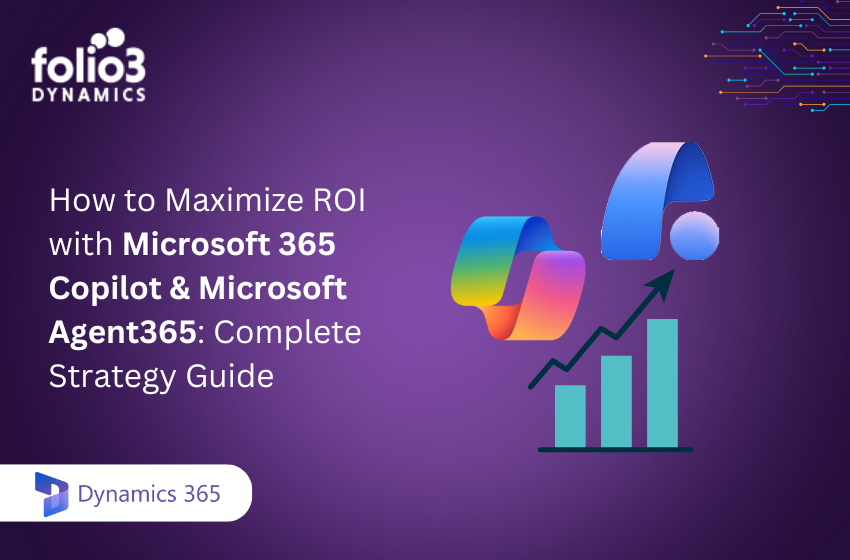Behind every decision a business makes, there is extensive planning and analysis to certify whether a decision is profitable for the business.
The economic impact of each decision is measured which allows businesses to make logical decisions that will benefit the company.
‘Integrated planning’, in general, is considered a sustainable, collaborative, and aligned approach that establishes a link between planning and resource allocation.
This makes it easier to measure progress since resources are available for an organization to meet its goals.
Let’s take a closer look at what integrated business planning is, what the process entails, and the applications of IBP!
What is Integrated Business Planning (IBP)?
Integrated Business Planning (IBP) is designed to increase enhance performance. The model accomplishes this by aligning product development functions with sales and marketing.
By extending the principles of Sales and Operating Planning (S&OP) through the value chain, it bridges the gap between execution and strategy.
The objective behind this model is to maximize profit but minimize risks at the same time. The following types of targets are achieved when IBP is implemented:
- Service levels
- Cash flow
- Revenue and demand
- Profits and margins
- Inventory levels
There is no universal definition of integrated processes, but all have one common goal: to balance these aims in a way that achieves efficiency and the best possible result.
Dashboard and reporting are a major part of IBP which provide the current operational and financial performance of a firm.
This highlights the firm’s shortfalls in performance and planning that require immediate attention. Strategies can be modified to deal with jeopardized plans.
Every IBP initiative focuses on assisting each department within a business in making decisions about product-market strategy. Capital investments and new product launches are some of the situations where IBP proves to be most useful.
6 Steps in the Integrated Business Planning Process
We’ve divided the IBP journey into a series of 6 steps. Let’s look at the process of integrated business planning below:
Step 1: Identify What’s Keeping the Company from Success
Each function in a company differs widely in terms of complexity.
The finance process of a company might never reach its full potential if the finance processes and systems have not been integrated with other financial functions.
The integration between processes might not be enough, acting as a bottleneck that prevents the company from reaching its full potential.
Hence, the first into the IBP journey is to identify the factors that keep the company from reaching its maximum potential.
Step 2: Equipping and Educating Employees
Once a company has defined its goals and identified the hindrances it faces, it must engage its entire workforce to overcome these problems and accelerate towards success.
Teamwork makes a dream work! Hence, without the commitment of the workforce, success is bound to be elusive.
To encourage workers to achieve goals and keep them invested in the success of a business, setting up an employee engagement program is vital.
Step 3: Establish a Product Prioritization Process
One of the most important aspects to consider when executing a project is the profit and the loss it will incur.
When IBP is implemented, only the projects that are guaranteed to bring success to the business are provided with resources. Products are also ranked similarly.
A business might also have to stop the production of a product line that has limited growth potential, even if it is currently providing profits to the business.
Cost-benefit analyses (CBA) become crucial when IBP is implemented. Hence, managers who wish to execute projects must first conduct CBAs to make sure the expected costs and benefits align with the goals set by the company.
This increases the overall efficiency of the business and increases the chances of success since the hit-and-miss techniques are not being used.
Step 4: Dynamic Strategy Planning
Once a company has identified its aims, it’s time to ensure it is on track to meet its goals. Hence, the company must communicate its progress on a routine basis to ensure its goals are met and that too, within budget.
In this phase of the integrated business planning process, the company has also identified the capabilities it is going to use to implement its strategy. Some examples of these capabilities are:
- Risk management: this is for companies with global supply chains that are dependent on changes in global or geopolitical events.
- Innovation: such companies are usually part of the technology industry and have the power to outrun their competitors through innovation and by developing new products.
- Commodity training: companies that depend on commodity cycles, for example, food and beverage companies, can have commodities as more than 80% of their core products. Such companies often use crops or livestock as raw materials.
- Knowledge management: consultancies and the software industry often rely on knowledge workers who help transmit knowledge between people and departments.
- Collaboration: companies might sometimes decide to integrate with their suppliers or even customers for the sake of strategic advantage.
- Supply exploration: some industries, such as the oil and fuel industry need huge sums of capital to expand their business.
To improve its strategies, a business needs to come up with easy-to-apply and effective plans.
Step 5: Expand the finance team’s influence
Whether it is the planning for a product, optimizing the supply chain, or conducting sales strategy meetings, the finance team plays an integral role in an organization.
Hence, choosing a finance team that is well-aware of how the company runs is imperative to ensure the company’s goals are being met.
This team will gather and analyze financial data to create a report that reveals whether a company is progressing towards its aims.
Step 6: Adopt the Tools and Technology to Support IBP:
Finance teams require updates and data from each operational area to be able to manage the business resources. Without data, the finance department will never know what quantity of input is required.
Tracking progress while implementing IBP is essential for success.
Integrated Business Planning Components
IBP is based on five components each of which is independent of one another. These components gather real-time data in the background.
It allows companies to monitor data within their departments which they can easily share across departments.
IBP framework components are listed below:
- Strategy:
Integrated business planning begins with the migration to an aligned operating model.
To do this, a company must affiliate both the corporate and the business unit strategy to the supply chain strategy.
Equipped with a strong understanding of corporate strategy, the company can construct an optimal supply chain structure and design its operations in the same way.
A strategically designed IBP framework is guaranteed to benefit the company and give it a competitive advantage.
Most business strategies help businesses by balancing supply and demand, or just focusing on sales revenue. But IBP takes this a step further by helping businesses maximize profits.
- People:
The senior management team of an organization plays an integral role in the IBP project lead.
Through the process, the myriad functions are set in line with the overall business strategy. The business is incorporated into a single homogenous process. This means that this role should be fulfilled by the CEO (or sometimes by his/ her direct reports)
Every project requires a plan but that doesn’t always determine the success of a business.
For the company to succeed, the plans must be communicated effectively with the team members. This will ensure that each person is aware of what the company expects of them and fulfills their assigned role effectively.
The project team must not be overburdened. The management team must set achievable goals. Don’t forget that discipline is the key to success!
- Processes:
Combining a structured approach with the integrated business planning framework is instrumental in implementing a fully optimized planning process.
The following steps determine the success of IBP implementation:
- Assess where your company stands
- Define your goals and where you need to be
- Come up with a plan to achieve your goals
- Analyze and constantly improve your processes
- Systems:
You must have figured out already that IBP is not simple. It requires not just the right people but also the correct software that supports the framework.
Although excel spreadsheets and business intelligence solutions are equipped with advanced features that a business needs, they are not powerful enough to fulfill business processes in an optimized and scalable way.
To find the right solution, look for something that is built on supply chain optimization.
Such software boasts advanced inventory management features, catering to lead times, expiry dates, asset management, etc.
The solution must view the entire supply chain from a holistic level, considering all business factors.
- Metrics:
IBP systems require actionable data. Accurate data is essential so that the business knows exactly where it stands and is aware of what actions to take.
To improve continually, the data governance model must also be implemented along with IBP.
KPIs (key performance indicators) are required so that the company can measure its progress. Important data that a business needs include:
- Accuracy of forecasts
- Fill rate
- Stock
- Overtime
- Inventory turnover rate
- Costs to sales ratio
- Rate of utilization
Integrated Business Planning Examples
Let’s consider a hypothetical manufacturing company. Let’s assume it decides to introduce robots that interact with human workers in their manufacturing process.
This collaborative robot is believed to increase the demand for bots equipped with motor skills on manufacturing sites.
Now that the company has determined its strategic direction, it must not directly jump to practical areas. Instead, it must begin with financial planning, supply chain optimization, and financial analysis.
In conclusion, setting goals is imperative to integrated business planning.
Applications of Integrated Business Planning
When implemented, IBP helps a business with the following objectives:
- Getting stakeholders invested in corporate goals:
All departments within a business and each member of the project team must understand what the organization is trying to achieve.
Each department must be assigned responsibilities and understand how the business will achieve its goals.
- Making business decisions based on evidence in the form of data:
This depends on using the correct KPIs that help the business collect accurate, real-time data. It is also crucial to integrate finance into the product, demand, and supply functions.
- Improving accountability by aligning decision-making and impacts:
Each department provides accurate data which reduced the burden on the finance team.
- Developing cross-functional collaboration:
Employee empowerment is one of the practical outcomes of IBP because it encourages departments to collaborate and be more open about their progress.
Why Is Integrated Business Planning Important?
IBP is important because it helps an organization with:
Alignment and Accountability:
IBP gets all the executives in a company to agree on 3 things. They collectively decide what the company’s goals are, how they will be achieved, and how the team and individuals will be accountable.
To make it easier for the management team to measure and track the company’s goals, the business can divide them into four categories:
- Industry-focused
- Operations and supply chain
- Financial aspects
- Marketing and sales
Making Informed Decisions and Actions:
Companies must adopt S&OP (sales and operations planning) principles as part of IBP. This means that the supply chain and logistics will be the first target when IBP is implemented.
Financials goals and decisions are aligned, and each department’s progress is tracked.
Each department looks at the big picture instead of focusing on what individual departments require. This holistic approach makes it easier to collect data which can then be used to make quicker and better decisions.
Promote Transparency/ Visibility:
Each department evaluates the progress it has made to achieve the company’s overall goals.
Thus, IBP communication between departments is important that allows the company to gather ideas and assess where their business stands.
Benefits of Integrated Business Planning
Several companies undertake IBP and report several practical benefits. The most common ones are listed below:
- Reduced holding costs
- Improvement in the correlation between demand planning and fulfillment
- Reduced time to launch new products
- Decreased holding costs
- Highly responsive demand fulfillment
- More responsive customer service
Integrated Business Planning Challenges
The maturity of the business and how long it has been in the market determines where it starts with IBP.
Some firms are based on the traditional top-down management structures and static annual budgeting.
These companies cannot come up with business plans that cater to their customers’ requirements. Such businesses need a lot of improvement.
To reap the benefits of integrated business planning, companies based on the command-and-control styles must decentralize authority.
Thus, the company’s leadership must also trust the lower levels of the organization to fulfill its aims by giving it decision-making power.
Companies must also adopt a bottom-up KPI reporting and budgeting process instead of developing a top-line budget.
Even with the bottom-up process, departments must begin with developing a plan of what they wish to achieve.
The cost of this plan must be calculated, and this number must be passed to the finance team, allowing it to calculate the total budget of the company.
It is a good idea for the firm to fund areas that are more likely to achieve the goals set by the business and are generally more productive than other departments.
Setting goals means deciding what the company prioritizes. At the end of the day, the company can reduce its expense on departments that do not align with the company’s goals.
What Is the Difference Between S&OP and IBP?
Integrated business planning is the advanced version of S&OP. Oliver Wight first came up with the term IBP that describes the S&OP process (sales and operation) that he developed in the 1980s.
There is a big difference between the two terms. S&OP focuses on just the traditional budgeting process.
But IBP is much more than that. Apart from the traditional budgeting process, it also focuses on supply chain and logistics and balancing supply and demand. It is also a more holistic approach compared to S&OP.
S&OP focuses entirely on supply and demand while IBP considers the entire business and its departments during the planning process.
Compared to IBP, S&OP is a more output-focused approach with short-term plans that drive supply and output. S&OP implements the traditional, static budgeting processes.
On the other hand, IBP prioritizes monthly planning which uses scenario planning as a tool and works to optimize results. It is also a long-term approach that encourages informed decision-making and developing a comprehensive financial plan.
Conclusion:
Integrated business planning goes well with cloud-based technology such as ERPs. IBP systems can make better decisions that are based on accurate numbers and analysis, without the need for humans to intervene.
Promoting transparency, visibility, and open communication, IBP is a tool that most businesses were looking for. Although IBP implementation faces challenges, once these are overcome, the business is bound to accelerate towards success!


